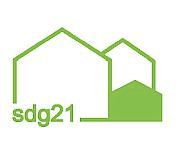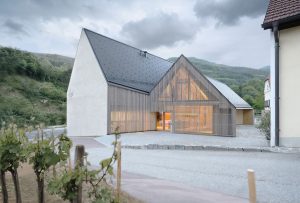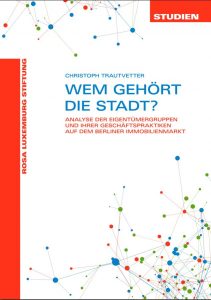This week, the Federal Cabinet intends to approve the draft bill for the coal phase-out law. However, the timetable for the shutdown of coal-fired power plants to be voted on deviates in several places from the coal compromise reached last year. The Baden-Württemberg Solar Cluster has pointed this out and is calling for significant improvements. According to the draft law, carbon dioxide emissions will be reduced significantly less than agreed in the first ten years: By 2030, only five gigawatts of power are to be switched off instead of 20 gigawatts. In addition, the number of CO2 certificates will not be reduced to the same extent as coal-fired power generation. "This violates the spirit of the coal compromise and must be corrected," says Solar Cluster Managing Director Franz Pöter. The renewed blockade of renewable energies - despite announcements to the contrary - must also come to an end, says Pöter. The draft bill does not include the lifting of the 52 gigawatt cap, which prevents the expansion of photovoltaics. The 1,000 metre distance regulation is a similar obstacle to the expansion of wind power generation.
The draft from the Federal Ministry of Economics is intended to legally implement the coal compromise that was painstakingly reached with associations and industry. There is not only criticism of the content: "We had 22 hours to formulate a statement," criticises Pöter. "A discussion was probably not wanted." In the view of the industry association, the CO2 reduction in the first ten years, for example, is far too low: it falls well short of the agreement in the coal compromise. According to the compromise, ten million tonnes of CO2 are to be avoided each year. This corresponds to a reduction of around two gigawatts of coal-fired power plant capacity. However, the draft only contains 0.5 gigawatts per year, a quarter of what was originally agreed.
"It is unacceptable for politicians to draft a coal phase-out law that exceeds the financial framework of the coal compromise and yet only implements a small part of the agreed CO2 reduction," criticises Pöter. If the draft becomes law, Germany will emit around 40 million tonnes more CO2 by 2030 - a major burden for the climate target.
Surplus of CO2 certificates looms, electricity price does not fall, renewables are hindered
Not all CO2 allowances from the shutdown power plants are to be removed from the market either. The resulting surplus would depress the CO2 price in the emissions trading system in future. This would allow the remaining coal-fired power plants to operate profitably on the market more often and thus emit more greenhouse gas. Furthermore, electricity prices are not to fall after all. In any case, this is no longer mandatory in the draft. This also has a negative impact on the energy transition: The conversion of a coal-fired power plant operated by Uniper to a more climate-friendly gas-fired power plant has been rejected. The argument: 2,000 jobs would be affected.
The curbing of the coal phase-out is also associated with a blockade of renewable energies. They are actually supposed to replace the electricity generation from coal-fired units that is being phased out. "Despite promises to the contrary, the 52-gigawatt cap on photovoltaics has still not been abolished," criticises Franz Pöter. "Many photovoltaic projects have been cancelled or at best postponed in recent months due to the unclear legal situation." Wind energy is not faring any better: the 1,000 metre distance regulation between wind turbines and residential areas poses a further obstacle to the expansion of wind power generation. The target formulated by the German government of generating 65 per cent of electricity from renewable energies by 2030 cannot be achieved with these restrictions. What is needed is a doubling of installed capacity by 2030 - that would mean 100 gigawatts of wind energy and 100 gigawatts of photovoltaics.
False arguments Jobs and system security
The current framework conditions have consequences for the domestic wind industry in particular, which has already lost around 35,000 jobs since 2017 - that is far more than all current jobs in the lignite industry combined. Photovoltaics suffered a similar fate a few years earlier, with 75,000 jobs lost. However, the future potential for jobs in the photovoltaic and wind energy sectors remains high compared to the coal industry. "It is therefore disproportionate to block the restructuring of the energy supply with reference to jobs in the coal industry," continued Pöter. "A smart industrial and economic policy for the energies of the future is urgently needed."
The energy system security argument does not go far either: despite a green electricity share of almost 43 per cent on average in 2019 and a 65 per cent share over two weeks in March 2019, grid stability has continued to increase in recent years. This is demonstrated by the historically low number of grid outages in 2018, with the Federal Network Agency confirming that the energy transition has not yet had any impact on system stability. The electricity grids can also be kept stable with a higher proportion of renewable energy. "The claim that we have to deviate from the coal compromise in order to guarantee system security cannot be substantiated with facts," says Pöter. "But it is fuelling fear among the population and industry. These unfounded statements are irresponsible and economically damaging."
---------------- Info box ----------------
Six demands of the Solar Cluster Baden-Württemberg e.V.
The draft bill for the Coal Phase-out Act must contain the following points:
- The CO2 reduction path agreed in the coal compromise must be adhered to. The shutdown dates for coal-fired power plants must therefore not be delayed and the residual electricity volumes must not be increased.
- CO2 certificates to the extent of the shutdown power plants must be withdrawn from the market.
- The state must not prevent the market-driven conversion of coal-fired power plants to gas-fired power plants.
- It must be possible to reduce electricity prices by refinancing the EEG levy on a pro rata basis within the framework of the 40 billion euros.
- The 52 gigawatt cap for photovoltaics must be removed immediately, and the 1,000 metre distance regulation for wind must not be adopted.
- Jobs in the solar and wind sectors must not be jeopardised in favour of coal-fired power generation.
Source: Press release of the Solar Cluster Baden-Württemberg from 27 January 2020
Keywords:
DE-News, Renewable, Funding, Climate protection, News Blog Baden-Württemberg, PV, Environmental policy, Ecology

![Ganzen Film anschauen [öffnet ein neues Fenster]](https://baufachberatung.net/wp-content/uploads/2013/03/In-Transition-2-0.jpg)



